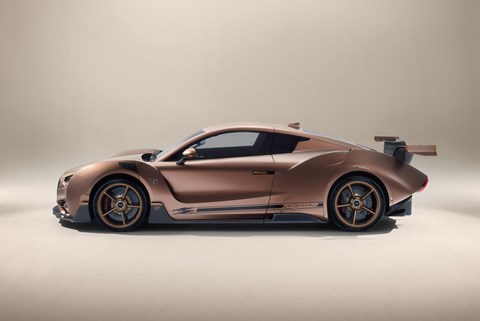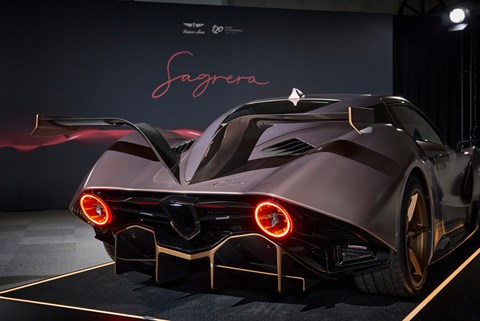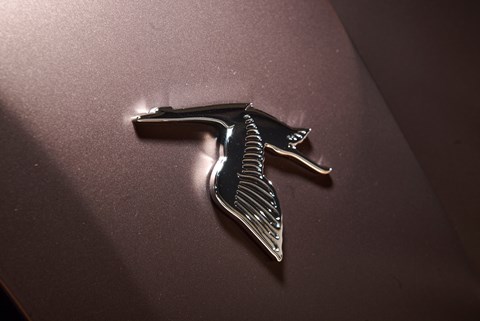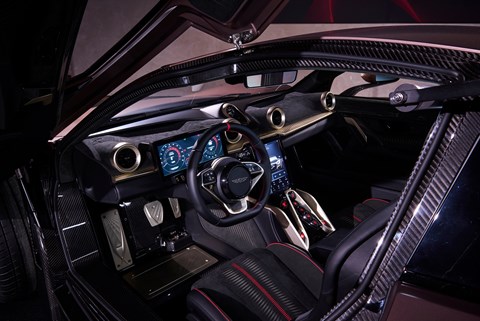► Third version of rare EV hypercar
► One-on-one time with design head
► 1100bhp, 2.6sec 0-62mph time
Remember Hispano Suiza? No? That’s understandable – the brand was known for its super-rare, coachbuilt creations during the first 40-odd years of the 20th century. But, since 2019, Hispano Suiza has been back in the ultra-rare automotive landscape with the Carmen electric hypercar.
The Carmen has now seen its third iteration with the Sagrera, following on from the original model in 2019 and then the Carmen Boulogne a year later. We’ve had some one-on-one time with head of design, Francesc Arenas during 2024’s Monterey Car Week, explaining why the Sagrera matters.
Give me some performance specs

So the Sagrera is designed to be a more aggressive, almost hardcore model of the Carmen EV. Here, a second-generation version of the brand’s own battery pack has been applied, upping capacity from the 80kWh original to 103kWh – good for a claimed range of up to 300 miles.
The Sagrera uses axial flux electric motors – one on each corner for a total of 1100bhp and 856lb ft of torque, good for a possible 2.6sec 0-62mph sprint time. New suspension made from ‘military-grade’ materials and carbon ceramic brakes are included, too.
Something tells me the specs aren’t the important bit…

It’s the looks, right? This thing is wild to look at from every angle. It’s almost art deco in places, echoing the halcyon days of Hispano Suiza’s coachbuilding days.
The Sagrera is designed as a more track-ready version of the Carmen, so needs the aerodynamic prowess to handle being on one. ‘We wanted to take care of all the details of this car and really keep the ‘wow’ effect,’ says Arenas.
‘The new rear diffuser lowers the exit angle of the air passing underneath the car,’ says Arenas, with the two-piece rear wing is designed to add significant downforce and is inspired by the wings of a stork.
Why a stork?

It’s the emblem of Hispano Suiza. ‘The first time we used it as a symbol was in 1919 when we presented the H6 model at the Paris motor show that year,’ says Arenas. ‘The stork was used for a squadron of French fighter planes that used Hispano Suiza engines. After the war, when Hispano Suiza presented the H6, the chief development officer of the company goes to ask the airplane fighter team if they can use the stork emblem o the top of the radiator. They said yes, because they were hugely grateful for the engines Hispano Suiza provided.’
But… why should I care?

‘That’s the difficult part for us,’ says Arenas, ‘because we stopped production of cars… seventy, eighty years ago. To recover this connection with the car enthusiast after so long is a hard challenge.
‘We’re taking a very direct reference to the iconic brand, and then apply it to the environment of the modern hypercar. We started to build this heritage line with the Carmen, just to build that link between the past and present, and now we are growing up and developing this image.
‘For the Sagrera, I requested that the company do this and make an aggressive version of the car, because the people around these kinds of cars find these elements so attractive,’ Arenas adds.